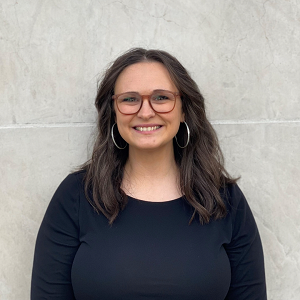
My name is Miya Petitgoue and I was recently hired as a Program Manager working specifically with the Healthy Homes Production Grant.
My name is Miya Petitgoue and I was recently hired as a Program Manager working specifically with the Healthy Homes Production Grant. Since being hired, I have also had the opportunity to go to OTS Training (Occupational Training & Supply) to become knowledgeable within the field to better serve the residents in Kankakee. Currently, I am certified through the following courses to perform these duties:
As I continue in training I will also gain the following certifications:
In the short time I have been with ECDA, I have had the opportunity to begin helping residents through the Healthy Homes Production Grant. ECDA has a great team that helps assist residents in office, over phone calls, text, and emails to ensure that their applications get complete. This team takes pride in serving residents of the City of Kankakee.
Next week (October 23rd – 29th) is National Lead Poisoning Prevention Week. While the United States has made great strides in reducing lead exposure to children and families, there is still more work to be done. In 1978 the United States issued a final rule determining that it is in the public interest to ban the use of lead-containing paint in residential property (42 FR 44199).
While this ruling prevented the creation of new lead-based paint hazards in residential homes after 1978, homes built in the U.S. before 1978 are still likely to have some level of lead-based paint. When the paint peels and cracks, it makes lead paint chips and dust. The paint chips and dust that it creates as it deteriorates are some of the most widespread sources of hazardous lead exposure for young children in the United States. Any surface covered with lead-based paint where the paint may wear by rubbing or friction is likely to cause lead dust in areas including; windows, doors, floors, porches, stairways, and cabinets to name a few.
ACTION STEPS:
HOW WE CAN HELP:
The Economic and Community Development Agency (ECDA) of the City of Kankakee has a Lead Poisoning Prevention and Abatement Grant Program that focuses on residents within the City of Kankakee who live in homes built before 1978 that may contain lead-based paint. The program gives property owners the opportunity to have their properties inspected for possible lead hazards. If any lead hazard is identified on the property, it is then mitigated. For more information on the Lead Poisoning Prevention and Abatement Grant Program, or other programs we offer residents, please do not hesitate to check the website https://ecda.citykankakee-il.gov/programs.php or call our office at 815.933.0506.
Mi nombre es Miya Petitgoue y recientemente fui contratado como Gerente de Programa trabajando específicamente con la Beca de Producción de Hogares Saludables. Desde que me contrataron, también he tenido la oportunidad de ir a OTS Training (Occupational Training & Supply) para conocer mejor el campo y servir mejor a los residentes en Kankakee. Actualmente, estoy certificado a través de los siguientes cursos para realizar estas tareas:
1. Inspector de plomo Inicial – certificado para hacer inspecciones.
2. Asesor de riesgo de plomo – certificado para realizar evaluaciones de riesgos.
A medida que continúo entrenando, también obtendré las siguientes certificaciones:
1. Trabajador de reducción de plomo: certificado en el conocimiento de los requisitos para el trabajo de reducción de plomo.
2. Supervisor de reducción de plomo inicial: certificado para supervisar el trabajo de reducción de plomo.
En corto tiempo que he estado con ECDA, he tenido la oportunidad de comenzar a ayudar a los residentes a través de la Beca de Hogares Saludables. ECDA tiene un gran equipo que ayuda a los residentes en la oficina, a través de llamadas, mensajes de texto y correos electrónicos para asegurar que sus aplicaciones se completan. Este equipo se enorgullece de servir a los residentes de la ciudad de Kankakee.
La próxima semana (del 23 al 29 de octubre) es la Semana Nacional de Prevención del Envenenamiento por Plomo. Mientras que los Estados Unidos ha logrado grandes avances en la reducción de la exposición al plomo en los niños y las familias, todavía hay más trabajo por hacer. En 1978, los Estados Unidos emitieron una norma definitiva que determinaba que era de interés público prohibir el uso de pintura que contenga plomo en propiedades residenciales (42 FR 44199).
Mientras la decisión impidió la creación de nuevos peligros de pintura a base de plomo en hogares residenciales después de 1978, es probable que las casas construidas en los Estados Unidos antes de 1978 todavía tengan algún nivel de pintura a base de plomo. Cuando la pintura se despega y se agrieta, produce partículas de pintura con plomo y polvo. Las virutas de pintura y el polvo que crea a medida que se deteriora son algunas de las fuentes más difundidas de exposición peligrosa al plomo para los niños pequeños en los Estados Unidos. Cualquier superficie cubierta con pintura a base de plomo donde la pintura puede desgastarse por roce o fricción puede causar polvo de plomo en áreas incluyendo; ventanas, puertas, pisos, porches, escaleras, y gabinetes para nombrar algunos.
PASOS DE ACCIÓN:
CÓMO PODEMOS AYUDAR:
La Agencia de Desarrollo Económico y Comunitario (ECDA) de la Ciudad de Kankakee tiene un Programa de Subvenciones para la Prevención y Reducción del Envenenamiento por Plomo que se enfoca en los residentes dentro de la Ciudad de Kankakee que viven en casas construidas antes de 1978 que pueden contener pintura a base de plomo. El programa da a los propietarios la oportunidad de inspeccionar sus propiedades para detectar posibles peligros de plomo. Si se identifica algún peligro de plomo en la propiedad, entonces se mitiga. Para más información sobre el Programa de Subvenciones para la Prevención y Reducción del Envenenamiento con Plomo, u otros programas que ofrecemos a los residentes, por favor no dude en visitar el sitio web https: https://ecda.citykankakee-il.gov/programs.php o llame a nuestra oficina al 815.933.0506.